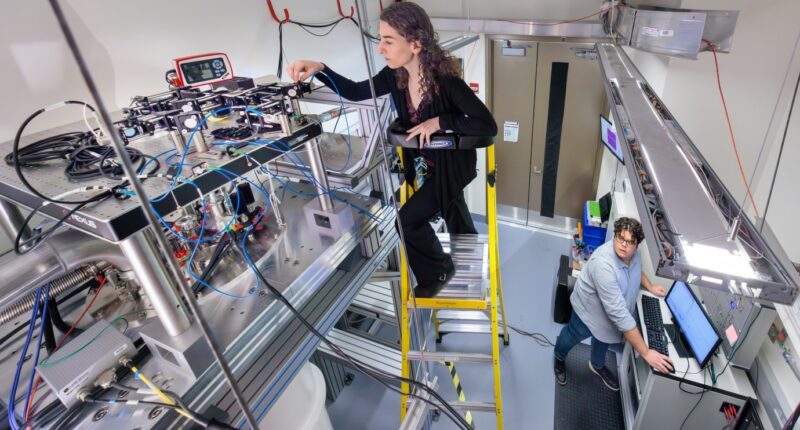Scientists have created molecular qubits that could power future quantum networks, enabling ultra-secure communication channels and connecting quantum computers across long distances through existing fibre-optic infrastructure.
The team from the University of Chicago, University of California Berkeley, Argonne National Laboratory and Lawrence Berkeley National Laboratory published the advance in Science on 2 October 2025.
The molecular qubits operate at telecommunications frequencies and bridge the gap between light and magnetism, making them compatible with current fibre-optic networks. The advance points towards the “quantum internet,” which could revolutionise secure communications and enable quantum computers to work together over vast distances.
“By demonstrating the versatility of these erbium molecular qubits, we’re taking another step toward scalable quantum networks that can plug directly into today’s optical infrastructure,” said David Awschalom, the Liew Family Professor of Molecular Engineering and Physics at the University of Chicago and principal investigator of the study. “We’ve also demonstrated that these atomically engineered qubits have the capabilities necessary for multi-qubit architectures, which opens the door to a wide spectrum of applications, including quantum sensing and hybrid organic-inorganic quantum systems.”
The qubits contain erbium, a rare-earth element that absorbs and emits light cleanly whilst interacting strongly with magnetic fields. This dual capability allows information to be encoded magnetically and accessed optically at wavelengths matching telecommunications technology.
“These molecules can act as a nanoscale bridge between the world of magnetism and the world of optics,” said Leah Weiss, postdoctoral scholar at the University of Chicago Pritzker School of Molecular Engineering (UChicago PME) and co-first author on the paper. “Information could be encoded in the magnetic state of a molecule and then accessed with light at wavelengths compatible with well-developed technologies underlying optical fibre networks and silicon photonic circuits.”
The compatibility with silicon photonics could accelerate the development of hybrid molecular-photonic platforms for quantum networks. Using optical spectroscopy and microwave techniques, the researchers demonstrated that the qubits work at frequencies used in telecommunications, high-performance computing and advanced sensors.











